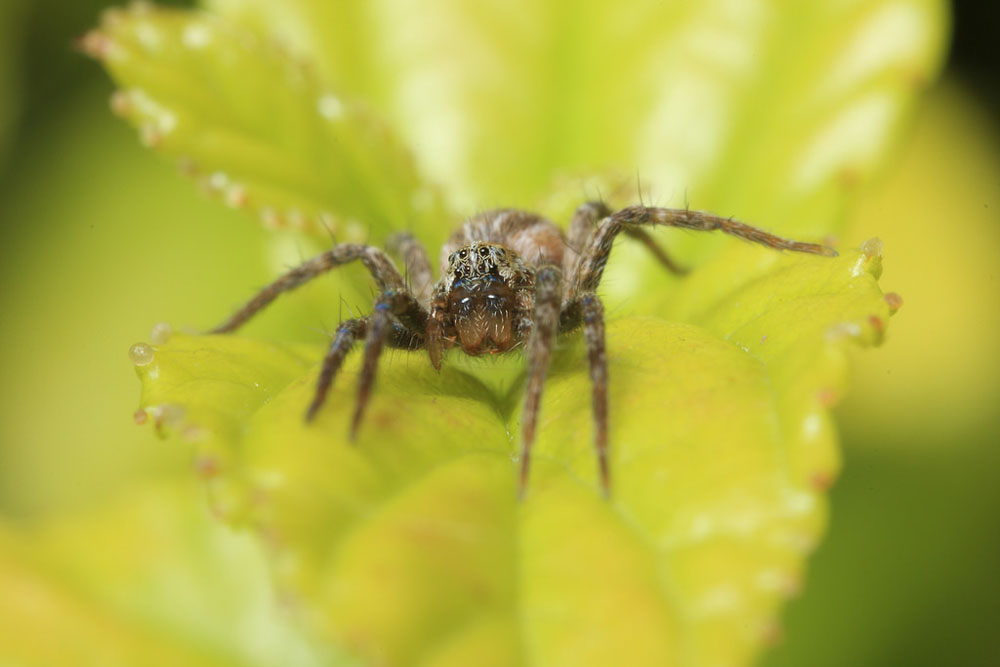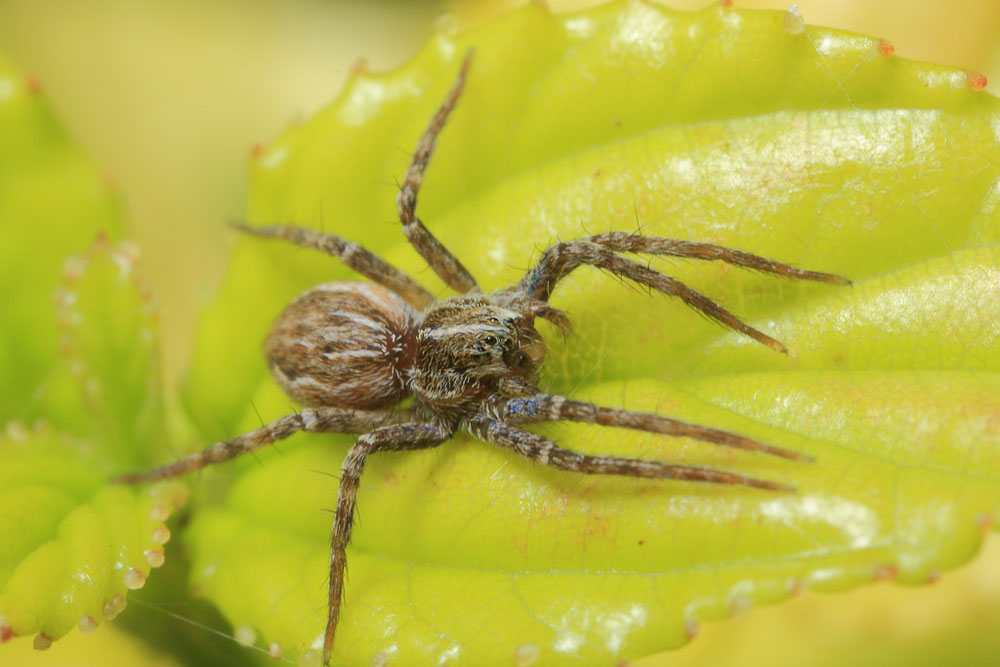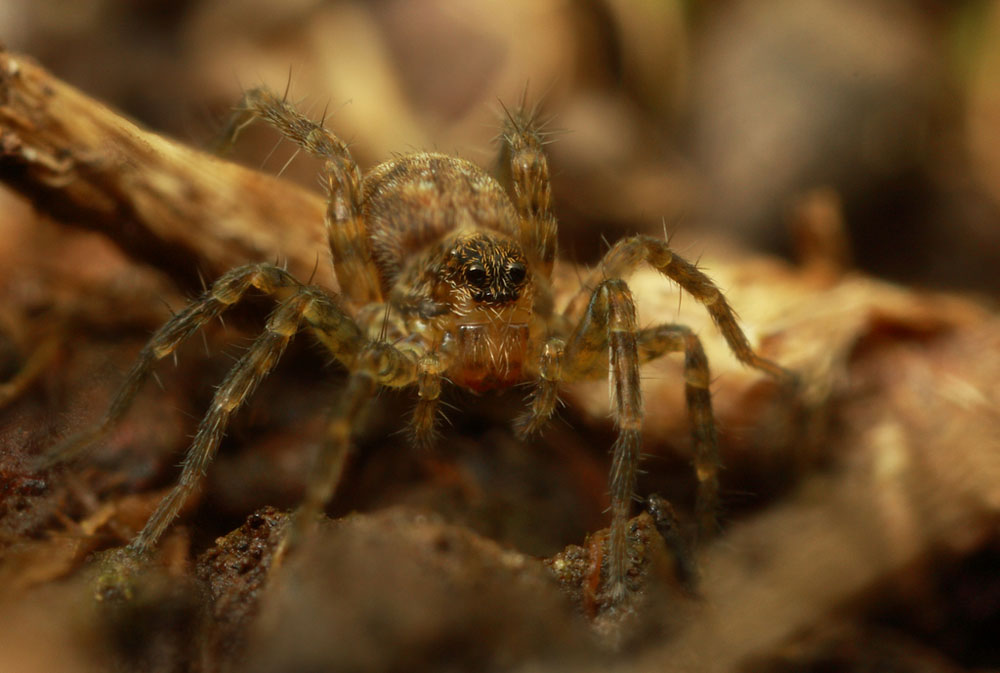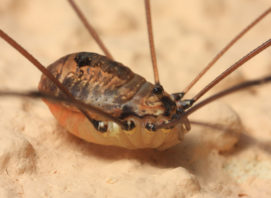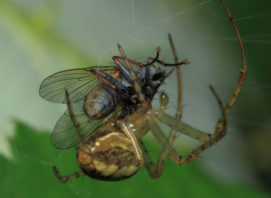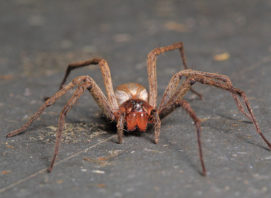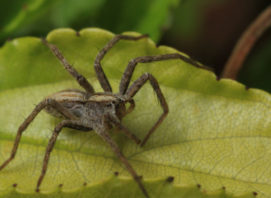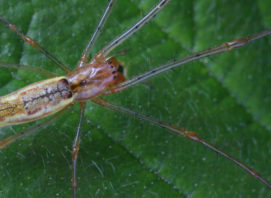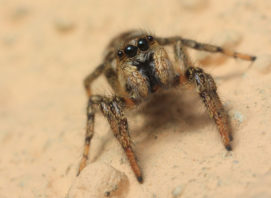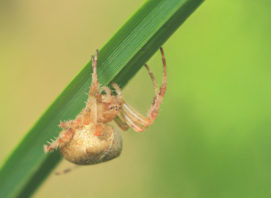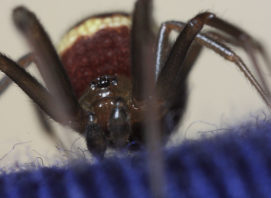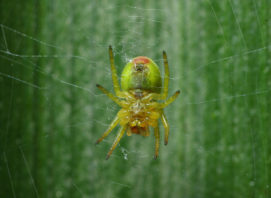Wolf Spider
Named for their swift motion, particularly while attacking prey, the wolf spider can sometimes be seen scurrying across open surfaces.
Anatomy: All spiders have in common a two-segmented body, eight legs, spinnerets and the absence of chewing mouthparts or wings. The eight noncompound eyes of the wolf spider are arranged with one lower row of four small eyes, two larger eyes and two more small eyes on top of the head.
Chelicerae, or jaws, are used to hold prey, inject venom and eat. Two sharp, horizontal fangs are present at the extreme bottom of these jaws. Also present near the jaw are the palps, which serve as sensory structures and as sperm storage in the male wolf spider.
The circulatory system of the wolf spider is open, meaning the blood isn’t confined and delivered inside of a closed system, and contains hemolymph, a respiratory protein similar in function to hemoglobin. Hemolymph is pumped through the heart and bathes the internal organs and tissues.
Behaviour, diet and habitat: Wolf spider habitats range from woodlands and dry, inland shrub lands to wet, coastal forests and alpine meadows. Some wolf spider species prefer to dwell in suburban gardens. Coastal sand dunes, mountain herb fields or riverbank gravel beds are also home to many wolf spider species. Because wolf spiderlings travel great distances, the habitat of a single species can span a large region. There are several wolf spiders found in the west that are most commonly brown in color, although gray and black specimens have also been documented. Colored markings may appear along their bodies. Some western wolf spiders can be found indoors, while others are specific to wet outdoor areas like riverbanks.
Burrows in the ground: Wolf spiders do not spin webs and reside instead within burrows. These burrows may be open or sealed with silken doors. In rainy seasons, wolf spiders plug their burrows with pebbles and build turrets to deflect floodwater. Twigs may also be placed at the top of the burrow.
Life cycle and reproduction: Mating for wolf spiders is a dangerous affair because males are sometimes killed and consumed by females following mating. However, males often survive to mate again. Wolf spiders exhibit unique parental care behaviors. Female wolf spiders often carry their egg sacs with them. When eggs hatch, the immature spiders remain with the female for a couple of weeks before dispersing.
Eggs: After mating, the female wolf spider seeks an isolated, covered location within which to lay her eggs. Females lay approximately 100 or more eggs, which they encase in a silk sac. Wolf spiders are protective of their eggs and, unlike other spider species, carry these spherical sacs on their spinnerets.
When eggs are ready to hatch, the female wolf spider rips the egg sac open in order to release her spiderlings. Spiderlings then swarm the female’s body and legs, where they remain for protection. They stay with the female for a couple of weeks, at which point wolf spiderlings disperse. They are then ready to begin fending for themselves.


